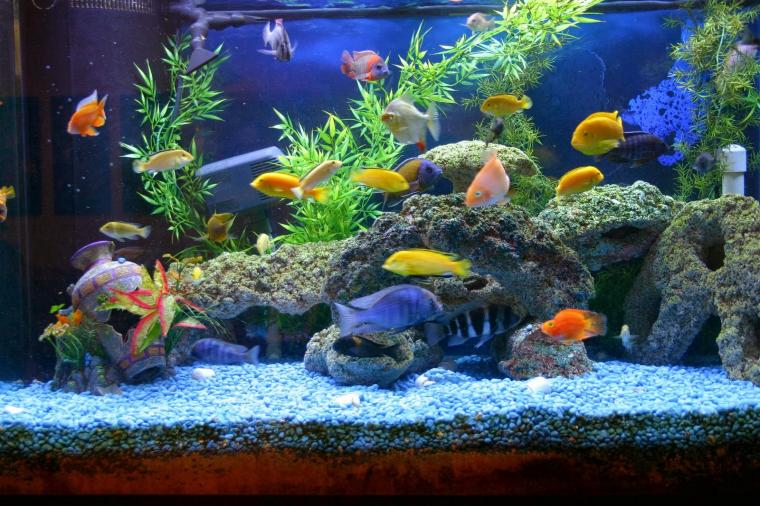There are a variety of clever aquarium devices which you could use, regardless of whether you are looking to cut down on maintenance or increase the durability of your aquarium.
The AWES System safeguards you from the effects of salinity changes and floods by using its smartphone application as well as pc software and liquid level sensors. The system also automates a variety of other elements of the aquarium.
Aquarium Technology
Aquariums have changed dramatically with the introduction of modern technology. From intelligent lighting systems to monitored devices that are automated, aquarium technology is helping aquarists keep their tanks healthy and flourishing.
The water quality monitors are among the top techniques for aquariums. These devices monitor vital variables in the water, such as temperature, pH levels as well as dissolved oxygen levels. The devices will alert the user of any anomalies they detect in the water’s chemistry.

Another aquarium tech that is popular includes LED lights. They provide the highest energy efficiency, as well as programable features like daylight and moonlight settings. They help improve the appearance and health of your corals as well as your fish. They also consume less energy than traditional metal Halide lighting. The systems come in a range of colors to match your marine setup.
Automated Feeding Systems
They will automatically feed a specific quantity according to a pre-set timetable. They can be fitted into 2.8 L tanks that are used by farms that raise killifish (Aquaneering) and make use of the tank lid’s two foremost holes for feed delivery.
To ensure the correct operation of automated feed systems They must be constantly monitored to ensure that the fish follow the feeding program that is programmed. If farmers who are not experienced chase their feeders, they are likely to overfeed on one occasion while underfeeding the next.
They remain in power saving until they are supplied. In the meantime, noncentral feeders rotate the acrylic disc through the food hopper, to an LED array and photoresistor and then back to the location of drop, in order to verify that 5 mg has been taken. (Figure 1 and figure Supplement 1A). The onboard stepper motor determines the photoresistor’s resistance and confirms a feed event.
Smart Monitoring Systems
The majority of aquariums require sophisticated equipment. The technology lets aquarists monitor and control these devices using a smartphone. It reduces the amount of time needed to test water, monitor lighting, and feed fish.
There are two kinds of smart aquariums: monitors and controllers. Monitors monitor a specific variable, for example the temperature, pH and Turbidity. Controllers can also use this information to manage different devices.
One example is a thermostat which will shut your heating system off by itself if it detects water temperatures above safe limits. The doser that can be programmed to deliver fertilizers according to the schedule you set along with trace Elements as well as Balling Salts. Additionally, there are gadgets which monitor things such as levels of evaporation as well as tank water levels, notifying you through a pc software or smartphone app.
Aquariums with Wi-Fi Controls
There are a lot of things you need to keep track of if you own a saltwater or fish aquarium. The water’s temperature and pH, lighting, as well as pump performance to name a few.
A controller for your aquarium is the most effective way to automate all of these monitoring. You can also install a safety function that automatically shuts off lights off when the temperature rises to dangerous thresholds.
This IoT smart aquarium will be able to track and keep track of the parameters described above. This can all take place from anywhere with an app for smartphones. It will reduce the effort needed to keep your aquarium healthy lap dat be ca thuy sinh theo yeu cau and can prevent deaths of fish that would not be expected. If you have the correct aquarium controller, you can instantly add modules and accessories to your tank when it expands.
Automated Water Change Systems
A freshwater aquarium, or a saltwater tank, requires periodic water changes to ensure the right temperature, salinity and replenish minerals. Refilling and siphoning water in your aquarium can be automated by a smart water exchange system. This can save the time, energy and stress your aquatic pets experience.
These systems typically consist of an controller unit, tubing that connects the aquarium to reservoir, as well as a pump that runs at set intervals. It is possible to control the flow of water through the connection of tubing to the valve.
Neptune Apex DOS can also serve as a controller for a reef aquarium. The system comes with a variety of features including a water sensor to the tank, a sensor for the sump, and an ability to be floating in the reservoir.